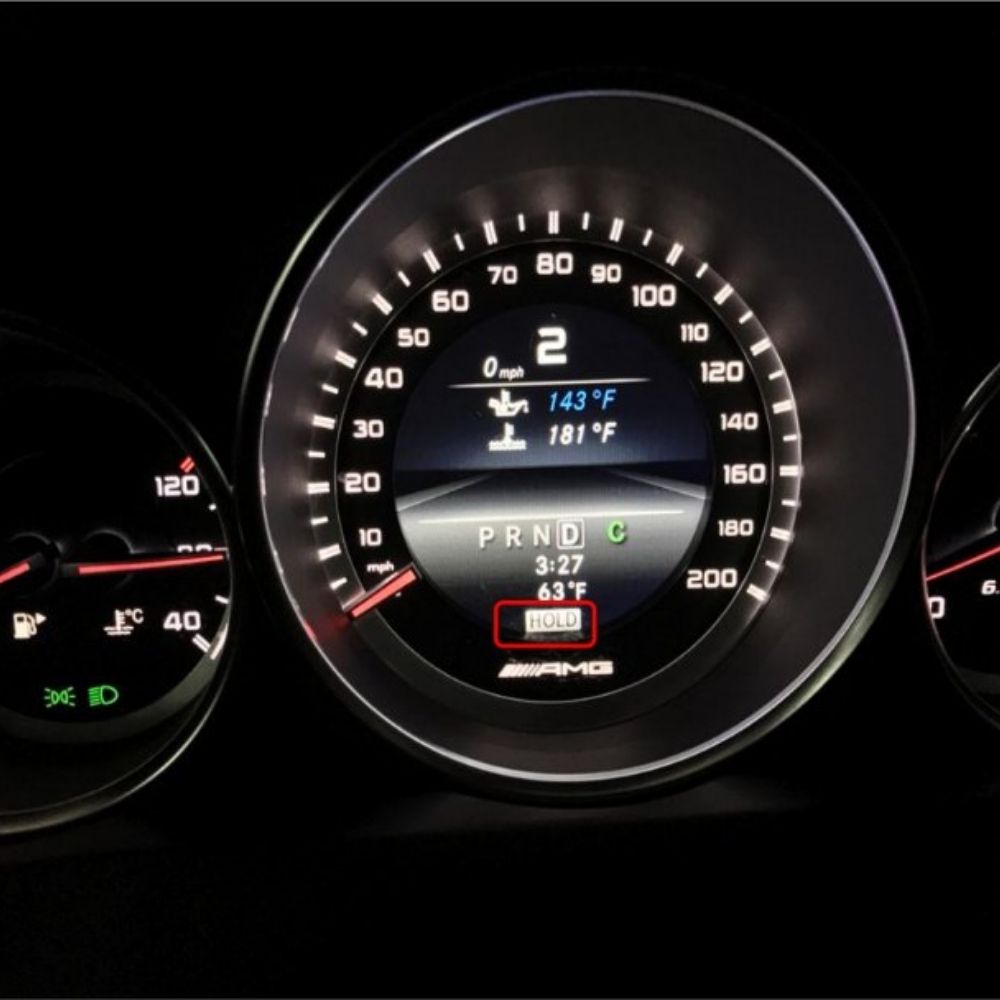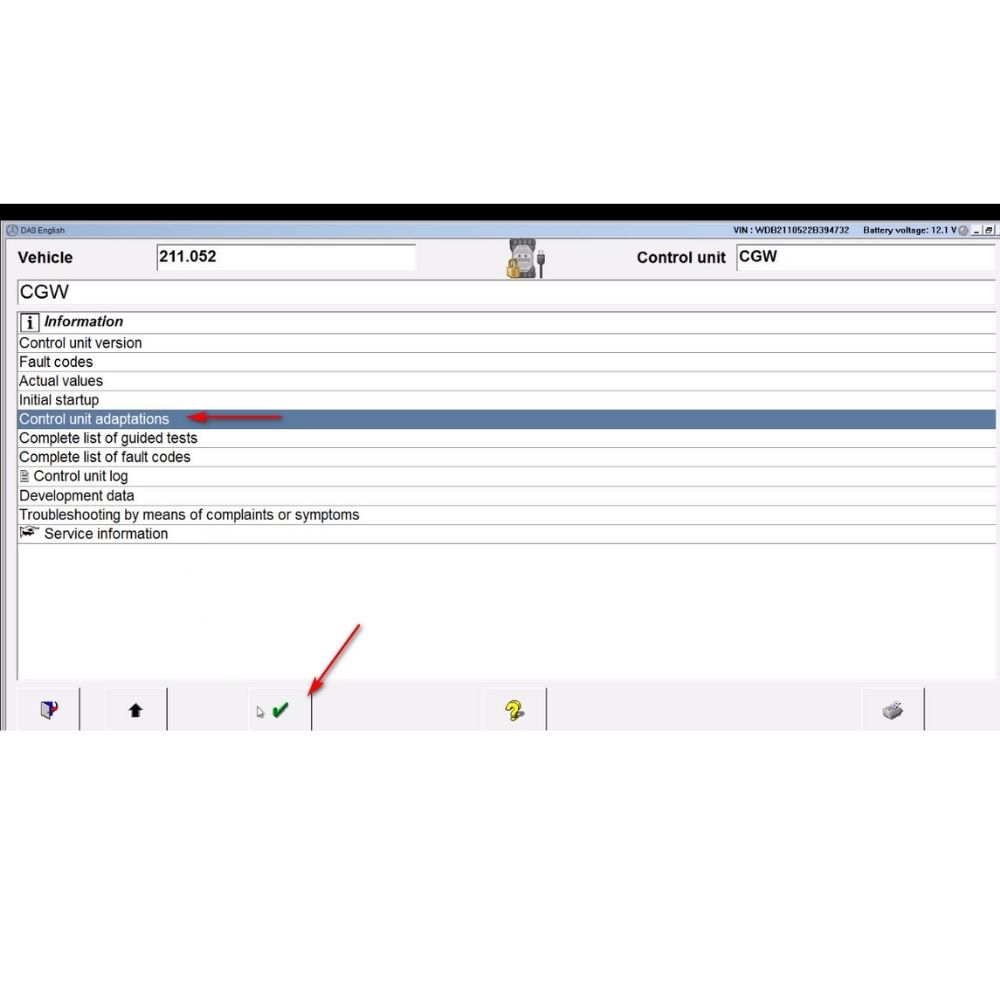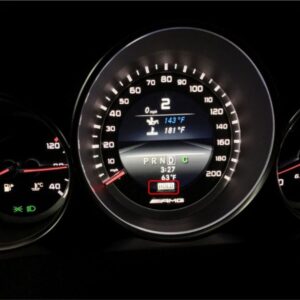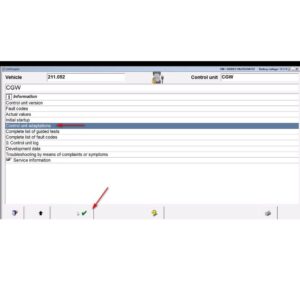

The P0121 error code appears when the Engine Control Unit (ECU) detects an implausible signal from the throttle position sensor (TPS). The TPS is responsible for monitoring the throttle valve’s position, helping regulate airflow into the engine, and ensuring proper fuel mixture and combustion. If the ECU receives an inconsistent or unexpected signal from the TPS, it will trigger the P0121 error code
Table of Contents
ToggleThe P0121 diagnostic trouble code (DTC) signifies that your Volkswagen’s Engine Control Unit (ECU) has detected an implausible signal from the throttle position sensor (TPS). Think of the TPS as a crucial communicator between your foot on the accelerator pedal and the engine itself. This sensor diligently monitors the precise angle and movement of the throttle valve, relaying this vital information to the ECU.
The ECU, the brain of your car’s engine management system, uses the TPS data to make critical adjustments. These adjustments include regulating the amount of air entering the engine, which in turn dictates the proper fuel mixture for efficient combustion. When the ECU receives a signal from the TPS that deviates significantly from the expected range or exhibits inconsistencies, it flags the P0121 error. This discrepancy can disrupt the delicate balance of air and fuel, leading to noticeable performance issues. Addressing this promptly is key to maintaining your VW’s optimal health and driving experience.
To truly grasp the significance of the P0121 Volkswagen code, it’s essential to understand the function of the throttle position sensor. The TPS is a potentiometer, a type of variable resistor, that directly connects to the throttle valve shaft. As the throttle valve opens and closes in response to your acceleration, the TPS sends a corresponding electrical signal to the ECU.
This signal isn’t just an on or off switch; it provides a precise analog reading of the throttle plate’s position. The ECU interprets this voltage signal to determine how much air the engine is demanding. Based on this information, along with data from other sensors like the mass airflow sensor (MAF) and oxygen sensors, the ECU calculates the ideal amount of fuel to inject for efficient power delivery and emissions control. A properly functioning TPS ensures seamless communication, leading to smooth acceleration, optimal fuel economy, and stable idling. When the TPS malfunctions or provides erratic data, it throws off this delicate balance, hence the P0121 VW diagnostic code.
Several factors can contribute to the ECU receiving an implausible signal from the TPS, triggering the P0121 VW error code. Identifying the root cause is the first step towards an effective repair. Let’s explore the common culprits:
Faulty Throttle Position Sensor (TPS): This is often the primary suspect. Over time, the TPS can wear out due to mechanical stress and environmental factors. The internal components might become damaged, leading to inaccurate or intermittent readings. A worn-out TPS might provide dead spots in its signal range or fail to deliver consistent voltage outputs as the throttle moves.
Damaged Wiring or Connectors: The electrical connections between the TPS and the ECU are crucial for reliable signal transmission. Broken, shorted, or corroded wires can disrupt this communication pathway. Physical damage to the wiring harness, loose connectors, or corrosion buildup on the terminals can all lead to the ECU receiving faulty or no signal from the TPS, resulting in the Volkswagen P0121 TPS performance issue.
Throttle Body Issues: The throttle body itself plays a vital role in the smooth operation of the throttle system. A dirty throttle body with carbon deposits can impede the free movement of the throttle plate. This obstruction can cause the TPS to send incorrect readings, as the actual position of the plate might not match the sensor’s output. A stuck or binding throttle plate can also create erratic TPS signals.
ECU Malfunction: While less common, a fault within the ECU itself can sometimes lead to misinterpretation of the TPS signal. Software glitches or internal hardware failures in the ECU’s processing circuits could potentially trigger the P0121 VW pedal position sensor range error.
When the P0121 error code is active, you’ll likely notice several telltale signs affecting your Volkswagen’s performance:
Check Engine Light (CEL) Activation: This is the most immediate indicator. The CEL will illuminate on your dashboard to alert you to a potential issue with the engine management system.
Engine Hesitation or Stumbling When Accelerating: An inconsistent signal from the TPS can cause the ECU to miscalculate the fuel mixture during acceleration. This can result in the engine hesitating, stumbling, or feeling sluggish when you press the gas pedal.
Reduced Power Mode (Limp Mode): In some cases, if the ECU detects a severely erratic TPS signal, it might activate a safety feature known as limp mode. This mode restricts engine power to prevent further damage and will significantly limit your vehicle’s speed and acceleration capabilities.
Irregular or Harsh Idling: A faulty TPS can also affect the engine’s ability to maintain a smooth idle. You might experience rough idling, where the engine speed fluctuates erratically, or a higher than normal idle speed.
Increased Fuel Consumption: An improperly functioning TPS can lead to an incorrect air-fuel ratio, often resulting in the engine running richer than necessary. This inefficiency can lead to a noticeable increase in fuel consumption.
Step 1: Initial Diagnosis with an OBD-II Scanner
Locate the OBD-II port in your Volkswagen (typically found under the dashboard on the driver’s side).
Connect your OBD-II scanner to the port and turn on the ignition (without starting the engine).
Use the scanner to read the stored diagnostic trouble codes. Confirm the presence of the P0121 code in ODIS Service and note any other related codes, such as those pertaining to the accelerator pedal sensor or other throttle system components. This can provide valuable clues about the underlying issue.
If your scanner has the capability, observe the real-time TPS voltage readings. Note the voltage with the throttle fully closed and fully open. Compare these readings to the manufacturer’s specifications for your specific VW model. Deviations from the expected range can indicate a faulty sensor.
Step 2: Thorough Inspection of the Throttle Position Sensor (TPS)
Identify the location of the TPS on the throttle body. It’s usually a small sensor directly attached to the throttle valve shaft. Consult your vehicle’s repair manual if you’re unsure of its exact location.
Carefully inspect the TPS for any visible signs of physical damage, such as cracks, chips, or corrosion. Check for loose mounting screws or a wobbly sensor body.
Examine the electrical connector attached to the TPS. Ensure it’s securely fastened and that there are no signs of corrosion or damage to the connector itself or the wiring leading into it.
Using your multimeter, measure the TPS voltage at different throttle positions.
With the ignition on and the throttle fully closed, the voltage should typically be around 0.5 volts.
As you slowly open the throttle, the voltage should increase smoothly and linearly, reaching approximately 4.5 volts when the throttle is fully open.
Inconsistent, erratic, or non-linear voltage readings indicate a faulty TPS that likely needs replacement.
Step 3: Meticulous Check of Wiring and Connectors
Trace the wiring harness connected to the TPS back towards the ECU. Carefully inspect the wires for any signs of damage, such as cuts, abrasions, or fraying. Pay close attention to areas where the harness might rub against other components or be exposed to heat.
Check the electrical connectors at both the TPS and the ECU ends of the wiring. Look for loose connections, bent or broken pins, and any signs of corrosion. Clean any corroded terminals with a wire brush or electrical contact cleaner.
Use your multimeter to perform continuity tests on each wire in the TPS circuit. Disconnect both ends of the circuit (at the TPS and the ECU) and check if there’s a continuous electrical path. A lack of continuity indicates a broken wire that needs to be repaired or replaced.
Also, check for shorts to ground or shorts between the signal wires using the multimeter in resistance mode. Unexpected low resistance readings can indicate a short circuit.
Step 4: Careful Cleaning of the Throttle Body
Locate the throttle body, which is typically situated between the air intake hose and the intake manifold.
Disconnect the air intake hose to gain clear access to the throttle body.
Spray throttle body cleaner onto a clean, lint-free microfiber cloth. Avoid spraying directly into the throttle body, as this could damage sensitive electronic components.
Gently wipe the throttle plate and the inside of the throttle body bore to remove any carbon deposits, dirt, or grime buildup. Pay particular attention to the edges of the throttle plate, as this is where deposits can often accumulate and impede smooth movement.
If the throttle plate is stuck or difficult to move, gently try to manipulate it by hand. Ensure it opens and closes smoothly without any binding or sticking.
Once the throttle body is clean, reassemble the air intake components.
After cleaning, it’s often necessary to reset the throttle adaptation using ODIS Engineering. This allows the ECU to relearn the new resting position of the throttle plate. Follow the specific adaptation procedure outlined in your diagnostic software.
Step 5: Inspection and Potential Update of ECU Software
If the P0121 error persists after addressing the TPS, wiring, and throttle body, the next step is to consider the possibility of an ECU-related issue.
Using VAS 6154 or VAS 5054A, connect to your vehicle’s ECU and check the current software version.
Consult Volkswagen technical service bulletins (TSBs) or your diagnostic software documentation to see if there are any known software updates available that address issues related to TPS signal interpretation or calibration.
If an update is available, follow the guided procedures in ODIS Engineering to perform the ECU software update. This process should only be undertaken by someone familiar with the procedure, as errors during ECU programming can have serious consequences.
Step 6: Clearing the Error Code and Performing a Thorough Test Drive
Once you’ve addressed the suspected cause of the P0121 error, use your OBD-II scanner to clear the diagnostic trouble code from the ECU’s memory.
Start the engine and allow it to idle. Monitor the engine for any signs of hesitation, rough idling, or other symptoms that were present before the repair.
Take the vehicle for a test drive under various driving conditions, including acceleration, deceleration, and steady cruising. Pay close attention to the throttle response and overall engine performance.
If the P0121 code returns, or if the symptoms persist, it indicates that the underlying issue has not been fully resolved, and further diagnosis may be necessary.
The P0121 VW trouble code should be considered a moderately serious issue. While it might not immediately render your vehicle undrivable, ignoring it can lead to several negative consequences:
Performance Degradation: Engine hesitation, stumbling, and reduced power can significantly impact your driving experience and potentially create unsafe situations, especially when accelerating or merging into traffic.
Limp Mode Activation: If the TPS signal becomes severely erratic, the ECU might engage limp mode, severely restricting your vehicle’s speed and power. This can leave you stranded or make it difficult to reach your destination safely.
Increased Fuel Consumption: An incorrect air-fuel ratio caused by a faulty TPS can lead to wasted fuel and higher operating costs.
Potential for Further Damage: While less likely in the short term, prolonged operation with a malfunctioning throttle system could potentially put stress on other engine components.
Failed Emissions Tests: An active P0121 code will likely cause your Volkswagen to fail an emissions test, which is a legal requirement in many jurisdictions.
Therefore, it’s crucial to address the P0121 code promptly to restore your vehicle’s performance, fuel efficiency, and ensure safe operation.
The P0121 error code on Volkswagen vehicles is commonly associated with a faulty throttle position sensor, wiring problems, or throttle body contamination. By carefully diagnosing the issue, inspecting electrical connections, cleaning the throttle body, and updating the ECU if needed, this error can be effectively resolved. If the problem persists, further diagnostics or professional assistance may be required.
If you’re still experiencing issues with your VW after following this guide, AutoExplain is here to help! We provide professional car diagnostics, coding, and programming support. Contact us today via WhatsApp at +1(936)2896695 for expert assistance with your vehicle’s electronic and diagnostic needs!








At AutoExplain, we provide automotive online repair service, auto repair tips, car repair manuals & document & training course to help mechanics of all experience levels—fix vehicles efficiently
AUTO EXPLAIN LLC
Employer Identification Number (EIN):
38-4349958
Whatsapp Us: +1(936)2896695
Gmail: [email protected]
Our Workshop: 1500 N Grant ST Sten Denver, Colorado, United States
Copyright 2025 © AutoExplain